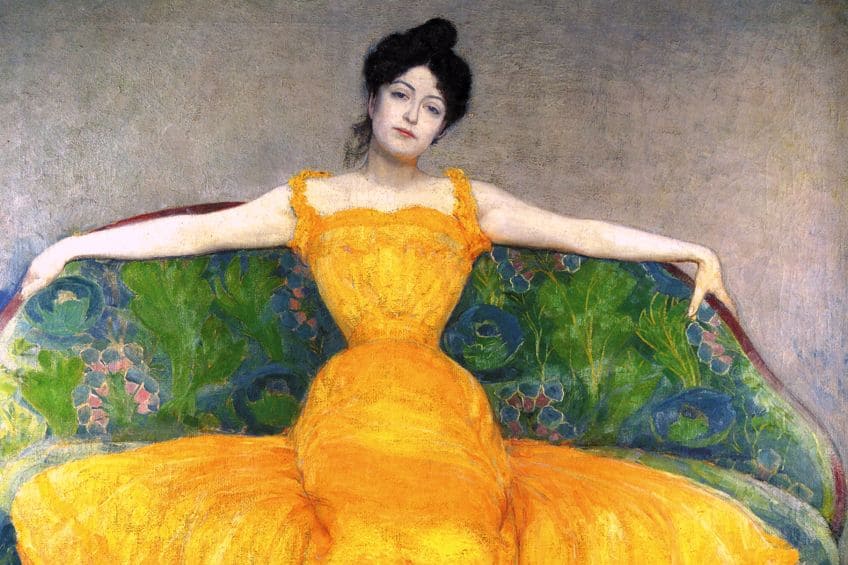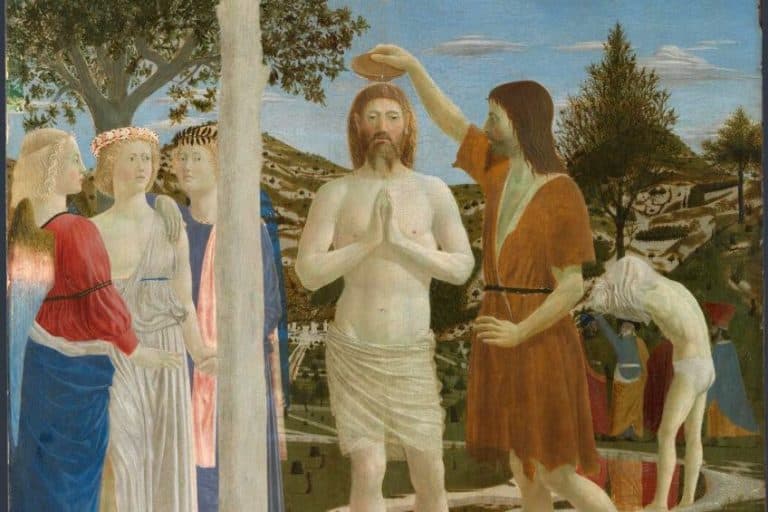Vienna Secession – Breaking from Traditional Art Establishments
The Vienna Secession, a pivotal movement in the late 19th and early 20th centuries, stands as a testament to the radical spirit of artistic innovation and cultural rebellion. Founded in 1897 by a group of forward-thinking artists including Gustav Klimt, Josef Hoffmann, and Koloman Moser, the Vienna Secession sought to break away from the constraints of academic tradition and challenge the conservative norms of the Viennese art scene. Embracing a diverse range of styles, from Symbolism to Art Nouveau, the Secessionists championed the ideals of artistic freedom, individual expression, and the synthesis of all arts. Through their groundbreaking exhibitions, publications, and architectural projects, the movement left an indelible mark on the trajectory of modern art and design, influencing generations of creators worldwide.
Table of Contents
Key Takeaways
- The Vienna Secession was a significant art movement that represented modernist aspirations and a break from traditional art establishment constraints.
- It emphasized the integration of different artistic disciplines and championed the concept of the total work of art.
- The legacy of the Vienna Secession is evident in its influencing modernist movements and shaping the cultural identity of Vienna.
Historical Context
The Vienna Secession emerged in 1897 when a group of Austrian artists severed ties with the Association of Austrian Artists, protesting the conservatism of the traditional art institutions. Their departure marked a bold step towards modernity and artistic freedom. Characterized by its openness to different art forms, including painting, sculpture, and architecture, the Secession represented a collective endeavor to merge fine and applied arts and embrace innovative approaches. This art movement paralleled Art Nouveau but maintained a distinct identity through its emphasis on originality and its divergence from any single style or method.

Central to the Secession’s philosophy was the idea of Gesamtkunstwerk, or total work of art, which sought to blur the boundaries between various artistic disciplines. This principle is epitomized in the Secession Building, designed by Joseph Maria Olbrich, which served as an exhibition space for contemporary and avant-garde art. The movement was notably associated with Gustav Klimt, whose works like The Kiss are often regarded as emblematic of the Secession’s artistic zenith. While welcoming international influences, the Secessionists were simultaneously contributing to what would be recognized as a distinctly Viennese cultural identity.
Origins and Founding
In 1897, a group of artists, dissatisfied with the prevailing conservatism of the Association of Austrian Artists housed in the Vienna Künstlerhaus, initiated a revolution in art. Gustav Klimt, along with other artists and architects, including Otto Wagner, established the Vienna Secession.
Their departure stemmed from a desire to foster innovative and modern artistic expressions, opposing the rigid historicism that dominated Viennese art and architecture.
Influence of Artistic Movements
The Vienna Secession was part of a broader wave of Art Nouveau and Jugendstil movements sweeping across Europe. These movements were known for their organic, fluid lines and a departure from classicist styles. They often embraced themes of nature and employed a synthesis of the arts and crafts with visual arts, aligning with the Secession’s goal to blur the boundaries between high and commercial art, embodying the spirit of modernism.

Split Within the Secession
The unity within the Vienna Secession was not to last. By 1905, ideological differences and diverging artistic directions caused a schism, resulting in the resignation of Klimt and other key members. The split highlighted the challenges in balancing individual creativity with collective ideals.
This was a tension that was reflective of the broader evolution and periodic fragmentation within art societies in early 20th-century Austria.
Key Figures and Works
The Vienna Secession movement was renowned for its vanguard in both artistic and architectural realms, pivotal figures like Gustav Klimt and Otto Wagner leading the charge. Their distinct contributions set new standards and left a lasting influence on European culture.

Prominent Artists and Architects
- Gustav Klimt: A central figure, Klimt served as the first president of the Secession. His celebrated works include paintings such as The Kiss (1907 – 1908) and the Beethoven Frieze (1901 – 1902).
- Josef Hoffmann: Hoffmann was a co-founder of the group and made substantial contributions as an architect and product designer. His style married functionalism with aesthetics, influencing modern design principles.
- Otto Wagner: A revered architect, Wagner incorporated functionalism and was responsible for notable Viennese buildings, such as the Secession Building itself.
- Joseph Maria Olbrich: Another key architect, Olbrich designed the iconic Secession Building and was instrumental in shaping the movement’s architectural identity.
- Koloman Moser: As a multifaceted artist, Moser’s work ranged from graphic arts to stained glass, contributing broadly to the group’s aesthetics.
- Egon Schiele: A protégé of Klimt, Schiele’s provocative art was marked by raw intensity and emotional depth.
- Max Kurzweil and Carl Moll: These artists were also vital to the movement, contributing to its visual diversity and propagation.
Notable Contributions
- The Kiss (Lovers) (1907 – 1908) by Klimt: This iconic painting represents the apex of Klimt’s golden phase, encapsulating the emotive and aesthetic ideals of the Secession.
- The Beethoven Frieze (1901 – 1902) by Klimt: Created for the 14th Vienna Secessionist exhibition, it is a monumental work exemplifying Klimt’s symbolist phase.
- Secession Building (Wiener Secessionsgebäude): Designed by Olbrich as an architectural manifesto for the movement, it stands as a physical embodiment of their forward-thinking vision.
- Ver Sacrum: The official magazine of the Secession, it played a critical role in articulating the ideas of the movement and showcased works by its members.
Concepts and Styles
The Vienna Secession movement harbored a distinct combination of styles and influences. It championed originality in art, deviating from academic traditions, and was marked by its embrace of Art Nouveau’s flowing lines.
It also represented a fascination with Japanese art, echoes of ancient cultures, and innovative graphic design.
Relationship With Art Nouveau
Art Nouveau and the Vienna Secession shared a penchant for organic forms and intricate patterns. The latter, however, showcased a more geometric abstraction within its decorative motifs. Secessionist architecture and objects often married practical functionality with an ornamental style mincing the natural forms epitomized by Art Nouveau.

Relationship With Ancient Art
The movement exhibited a reverence for ancient art, drawing inspiration from cultures like the Egyptians and Classical Greco-Roman. These ancient forms were synthesized, resulting in an art that appeared both time-honored and avant-garde.
Such connections heralded a rebirth of classical ideas in a new, modern context.
Graphic Art
Graphic art under the Secessionist banner flourished with original typography and layout designs. Artists created distinctive poster art, magazine covers, and other graphic materials characterized by bold lines and flat areas of color—an aesthetic that would influence the development of modernist graphic design.

Architectural and Artistic Styles
The Vienna Secession stands as a beacon of artistic and architectural innovation, encapsulating elements of Art Nouveau and championing the Gesamtkunstwerk concept—a synthesis of the arts.
This reflects in the Secession’s collaborative works across various art forms and its lasting influence on modern and contemporary art and architecture.
Architectural Significance
Otto Wagner: He was a critical figure in the Vienna Secession who contributed significantly to the architectural landscape of Vienna. Wagner’s use of geometric forms and clean lines was revolutionary, setting a foundation for modern architecture. The Karlsplatz Stadtbahn Station is a testament to his influence on Art Nouveau architecture, as it blends functionality with elegant design.

Secession Building: Designed by Joseph Maria Olbrich, this exhibition space is iconic for its white, cubic structure topped with a gilded dome, often nicknamed “the golden cabbage.” It represents a physical manifestation of the Secessionists’ architectural ethos and continues to serve as a symbol of their break from historicist traditions. Integration of Various Arts: Vienna Secession architects actively merged fine art and applied arts.
They were not bound by a singular style, which encouraged diversity in design—ranging from the decorative to the simplified forms that predated modernist ideas.
Artistic Innovation
As a prominent member of the Vienna Secession, Gustav Klimt’s work is renowned for its ornamental richness and use of gold leaf. His paintings epitomize the group’s dedication to innovation in the visual arts, especially seen in his contributions to the genre of fine art painting. The Vienna Secession had a considerable impact on the evolution of graphic design. The group’s focus on geometric design, combined with stylized ornamentation, evolved the visual language of their time.

They embraced a comprehensive approach, where sculpture, graphic design, and other visual arts shared a cohesive aesthetic typified by the stylized forms of Art Nouveau. Members of the Vienna Secession involved themselves in various art forms, from painting and sculpture to graphic arts. Josef Hoffmann, for instance, excelled not only as an architect but also as a designer of furniture, jewellery, and other objects, underscoring the Secessionists’ holistic view of art’s role in everyday life.
Decline of the Vienna Secession
The Vienna Secession, established in 1897, commenced with a bold vision for innovation in art and aesthetics. Nevertheless, its influence began to wane leading up to World War I. Various factors contributed to its decline:
- Shift in artistic preferences: As global artistic trends evolved, interest in the ornate and decorative aspects of Art Nouveau gave way to modernist movements, which favored simplicity and functionalism.
- Internal tensions: The Secession was founded on the principle of artistic freedom, but diverging views among its members led to internal conflicts. This was exemplified by the resignation of Gustav Klimt, a key figure, in 1905.
- Economic factors: Economic shifts pre-War affected patronage and the financial viability of the art produced under the Secession’s vision.
- Cultural dynamics: With avant-garde movements gaining momentum in different European cities, Vienna’s position as an artistic hub diminished, impacting the Secession’s prominence.
The fallout from these factors was significant. The group’s output reduced in quantity and influence, public attention was diverted to other movements and locales, and the association faced a dwindling membership and less cohesiveness. The Vienna Secession’s era of prominence was indeed fleeting, yet its legacy persevered in European art and architecture.
Its impact on Art Nouveau and subsequent movements ensures its continuing relevance in the history of art.
Legacy and Influence
The Vienna Secession’s contribution to modern art and architecture can be measured by its continued presence in academic discourse and its influence on various movements that followed.

Impact on Modern Art and Architecture
Otto Wagner and his colleagues pioneered a shift towards modernism that left a significant mark on the cultural landscape. Their collective efforts materialized through the Wiener Werkstätte, an organization promoting fine arts and crafts, which directly opposed then-prevalent historicist styles.
The emphasis on Gesamtkunstwerk, or total work of art, advocated for synergy between art forms, creating a holistic aesthetic experience that resonated beyond Vienna to places like Darmstadt, Munich, and Berlin.
- The Secession movement was instrumental in the evolution of Art Nouveau, characterized by organic lines and a departure from traditional restrictions.
- Gustav Klimt, a founding member, infused his artwork with symbolic elements and ornamental flair, indicative of this new style.
- Otto Wagner’s functionalist approach laid the groundwork for modern urban planning and construction, with some of his buildings, such as the Austrian Postal Savings Bank, standing as iconic representations of the movement’s architectural legacy.
Preservation and Contemporary Relevance
In contemporary times, the Leopold Museum in Vienna has dedicated itself to the preservation and curation of Secessionist artworks, reflecting the movement’s enduring relevance in modern art. Exhibitions that juxtapose these historical pieces with contemporary art underscore the Secession’s influence on subsequent generations.
- The principles of the Vienna Secession have occasionally experienced revivals, reinforcing the movement’s ideals against the backdrop of ever-encroaching commercialization in the art world.
- The movement’s stress on originality and a break from tradition remains impactful today, as many artists and architects continue to seek a balance between individual expression and the commercial imperatives of the art market.
- The Wiener Werkstätte, envisioned as a collective of artists and designers striving for excellence in craft, can be seen as a precursor to the modern designer-maker movement.
- The emphasis on quality and unification of the arts has influenced both design philosophy and practice well into the 21st century.

The Vienna Secession remains a beacon of artistic innovation and cultural significance in the annals of art history. Its members, through their bold experimentation and rejection of artistic conventions, paved the way for the emergence of modernism and set a precedent for artistic autonomy and creative expression. While the movement dissolved in the early 20th century, its legacy endures in the lasting influence of its key figures and their contributions to art, architecture, and design. The Vienna Secession continues to inspire contemporary artists and thinkers, reminding us of the timeless power of artistic vision and the transformative potential of cultural movements.
Frequently Asked Questions
In What Ways Did the Vienna Secession Differ from Art Nouveau?
The Vienna Secession was a unique artistic movement that, while contemporaneous with Art Nouveau and sharing similar ideals such as the incorporation of organic forms, placed a stronger emphasis on artistic freedom and the synthesis of the arts. Unlike Art Nouveau, the Secessionist movement had a more pronounced focus on artistic innovation and breaking away from traditional constraints.
How Did the Vienna Secession Influence Furniture and Interior Design?
Furniture and interior design during the Vienna Secession era evolved to feature geometric abstraction, simplicity of form, and functional aesthetics. Designers like Josef Hoffmann and Koloman Moser created pieces that combined utility with elegant design, significantly contributing to modernist principles in design.
Who Were the Key Figures Associated With the Vienna Secession?
Key figures of the Vienna Secession included painters like Gustav Klimt, architects such as Otto Wagner, and designers like Josef Hoffmann and Koloman Moser. These individuals were instrumental in various disciplines, leading a progressive movement that sought to redefine art, architecture, and design in the late 19th and early 20th centuries.
Isabella studied at the University of Cape Town in South Africa and graduated with a Bachelor of Arts majoring in English Literature & Language and Psychology. Throughout her undergraduate years, she took Art History as an additional subject and absolutely loved it. Building on from her art history knowledge that began in high school, art has always been a particular area of fascination for her. From learning about artworks previously unknown to her, or sharpening her existing understanding of specific works, the ability to continue learning within this interesting sphere excites her greatly.
Her focal points of interest in art history encompass profiling specific artists and art movements, as it is these areas where she is able to really dig deep into the rich narrative of the art world. Additionally, she particularly enjoys exploring the different artistic styles of the 20th century, as well as the important impact that female artists have had on the development of art history.
Learn more about Isabella Meyer and the Art in Context Team.
Cite this Article
Isabella, Meyer, “Vienna Secession – Breaking from Traditional Art Establishments.” Art in Context. March 11, 2024. URL: https://artincontext.org/vienna-secession/
Meyer, I. (2024, 11 March). Vienna Secession – Breaking from Traditional Art Establishments. Art in Context. https://artincontext.org/vienna-secession/
Meyer, Isabella. “Vienna Secession – Breaking from Traditional Art Establishments.” Art in Context, March 11, 2024. https://artincontext.org/vienna-secession/.











